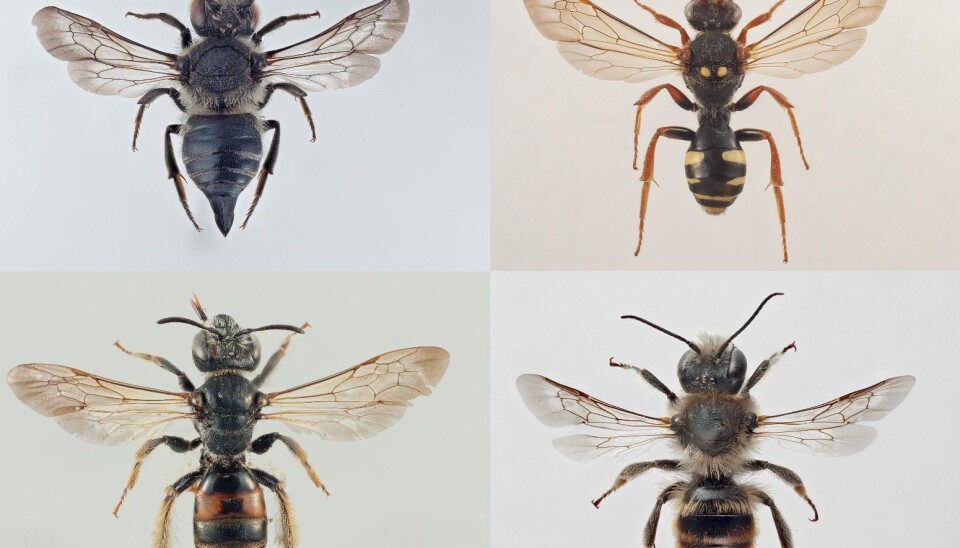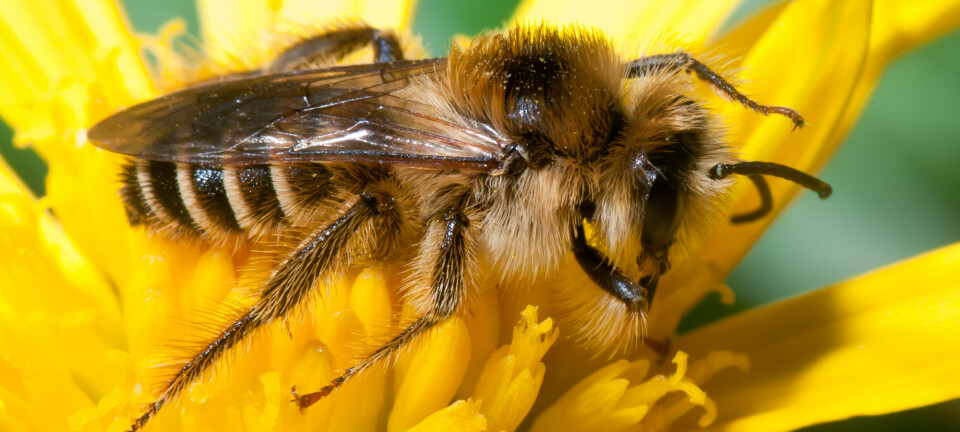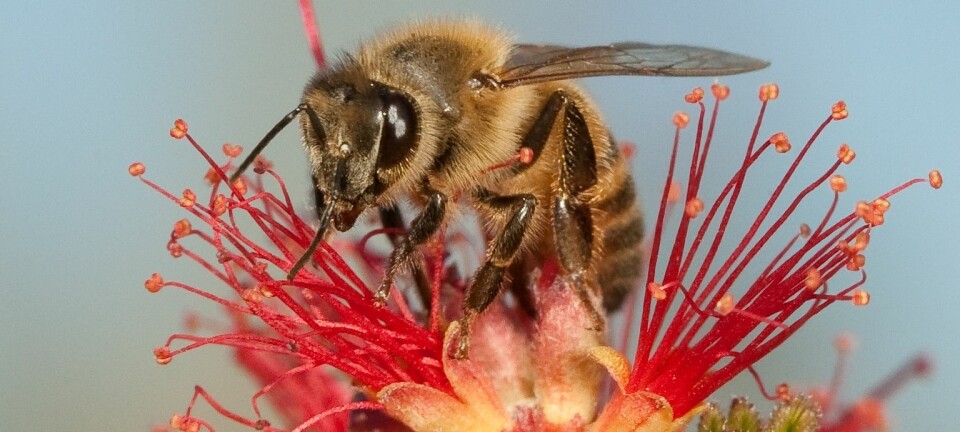An article from Norwegian Biodiversity Information Centre

All bees are accounted for
Bees have great ecological and economic impact because of their important role in pollinating plants. Now, after several years of intense mapping of these industrious insects, all of Norway's bee species have been surveyed and catalogued.
Denne artikkelen er over ti år gammel og kan inneholde utdatert informasjon.
Norway's bee species diversity is now very well documented, and the scientists do not expect the number of species to increase.
In the last five years, nearly 20 bee species new to Norway have been documented, according to Frode Ødegaard, senior scientist at NINA, the Norwegian Institute for Nature Research.
An estimate from 1993 suggested that there were 208 bee species in Norway. From that time until the present, much work has been done. Researchers have examined museum collections and related material dating back to 1850. This work resulted in some species of bees being removed from Norway's list, while others have been added.
However, most of the data collection took place outdoors. Since 1990 researchers have collected more than 90 percent of all existing material on Norway's bee species. The result is a catalogue of 203 Norwegian bee species, of which 34 are bumblebees.
Some come, some go
In spite of the comprehensive survey, scientists have still not been able to locate three or four species that they believe exist in Norway.
Andrena minutuloides, a species of sand bee, and Chelostoma rapunculi, a wood-nesting bee, are two of the species the scientists still expect to find. The two species are found in Sweden, and their distribution extends to the Norwegian border.
Norway's fauna is constantly changing, and the range for some species is shrinking, while for others it is expanding.
The survey has documented examples of bee species that are on the rise, and some of those are new to Norway. These include the parasitic bee Sphecodes albilabris and the sandy soil bee, Lasioglossum sexstrigosum.
"We will always discover new species and lose others, now and in the future. For example, we expect that the Vestal cuckoo bee, Bombus vesitalis, which is a parasitic bumblebee, will soon come to Norway. We know this because we see that its host, the buff-tailed bumblebee, Bombus terrestris, has expanded its range and has become very common in Norway," says Ødegaard.
Important for bee management
In spite of the intense effort during the last five years, the work is by no means completed.
"We still have to determine in more detail where the various species live," he says. "But now we have a knowledge base to build on, in terms of mapping, monitoring and the production of more accurate Red Lists. This is also an important contribution to the knowledge-based management of Norway's biodiversity."
Ødegaard worked on the documentation task with Lars Ove Hansen at the University of Oslo's Natural History Museum and Øistein Berg from Bærum, both in publically funded projects and in their spare time.
One important catalyst has been the biodiversity project, run by the Norwegian Biodiversity Information Centre on behalf of the Ministry of the Environment, but another prime mover has been the inter-departmental ARKO project (Red List Species - Location, Identification and Monitoring), which has been coordinated by NINA since its inception in 2003.
The new knowledge will have implications for how bee diversity is managed in Norway.
"The fact that we have catalogued these insects, and are learning more about them is very important," says Erik Solheim, Norway's Minister of the Environment and International Development. "Several are on the Red List. This knowledge puts us in a much better position to take care of bees and bumblebees, and of the ecosystem services we get from them.
"These issues will also be addressed by a newly appointed committee of experts on ecosystem services," says Solheim.
The importance of bees
The role that bees play in pollinating berries, fruits and plants is important in nature and also has great economic value. Populations of bees in the US and Europe are on the decline, a trend that is also mirrored in Norway. The 2010 Norwegian Red List shows that one third of Norwegian bees are threatened, including six of Norway's 34 bumblebee species.
The biggest threat to domestic bees worldwide, known as CCD, or colony collapse disorder, has not yet affected Norway. Instead, Norway's wild bee populations are adversely affected by habitat destruction.
The European Commission estimates that 84 percent of plant species in Europe depend on insect pollination, and the economic value of bee pollination has been estimated to be worth around 22 billion euros.
These trends have encouraged a number of countries to act, and today there are several research projects underway across the globe that aim to find out more about why bees are disappearing and what sorts of measures can be taken to halt their losses.
"Bees and bumblebees play a very important role in the pollination of plants. If there are fewer insects to pollinate plants, the situation will be increasingly critical for many rare plant species. Our food production is also totally dependent on bees and bumblebees for plant pollination," says Solheim.
"Up to 30 percent of the food we eat is directly or indirectly dependent on pollination by bees."
Translated by: Nancy Bazilchuk
































